Results 10,191 to 10,200 of 10762
LinkBacks (?)
-
12-26-2016, 11:32 AM
-
09-02-2016, 05:39 PM
-
whole garden made with pallets!! Love it!! | Pallets | Pinterest | Pallets, Pallets Garden and Wooden Pallets
Refback This thread03-06-2016, 11:30 AM -
10-20-2015, 05:29 PM
-
06-12-2015, 08:00 PM
-
02-26-2015, 01:58 PM
-
01-05-2015, 04:13 PM
-
12-19-2014, 10:19 AM
-
EMERGENCY: HUGE FEMA PANDEMIC EXERCISE IN USA IN NOVEMBER, INTERNET SHUT DOWN PART OF EXERCISE | Prepare4Survival
Refback This thread12-03-2014, 10:39 PM -
Off Grid World ? Ugly Duckling Shipping Container Home Built by Artist Is a Beautiful Swan on the Inside
Refback This thread11-25-2014, 03:10 PM -
11-17-2014, 10:59 PM
-
11-13-2014, 11:18 AM
-
11-09-2014, 02:54 PM
-
10-28-2014, 11:38 PM
-
10-26-2014, 05:54 AM
-
10-16-2014, 11:28 AM
-
10-03-2014, 01:25 PM
-
10-02-2014, 09:16 PM
-
09-26-2014, 07:00 PM
-
09-26-2014, 01:56 PM
-
09-19-2014, 04:46 PM
-
09-13-2014, 05:49 AM
-
09-05-2014, 01:52 PM
-
09-01-2014, 09:39 AM
-
08-30-2014, 06:29 PM
-
08-10-2014, 06:29 AM
-
08-04-2014, 05:07 PM
-
07-23-2014, 11:14 AM
-
New Evidence on Expiration Dates | Medical Preparedness | Doom and Bloom (TM) | Doom and Bloom (TM)
Refback This thread07-22-2014, 10:10 AM -
07-18-2014, 08:37 PM
-
07-15-2014, 04:57 PM
-
07-11-2014, 01:40 AM
-
04-22-2014, 11:14 AM
-
04-18-2014, 12:57 PM
-
04-18-2014, 10:10 AM
-
04-14-2014, 12:18 AM
-
04-12-2014, 02:28 AM
-
03-02-2014, 11:43 PM
-
12-24-2013, 11:59 PM
-
12-07-2013, 11:04 PM
-
kitchen | Cob
Refback This thread11-25-2013, 03:24 PM -
10-22-2013, 10:25 PM
-
Apple Pie Braid | Sweets
Refback This thread09-26-2013, 07:58 AM -
09-02-2013, 04:44 PM
-
5 Reasons Why You May have to Bug Out Even Though You Don’t Want to | The Apartment Prepper's Blog
Refback This thread08-23-2013, 03:20 PM -
06-27-2013, 06:30 AM
-
06-23-2013, 08:11 PM
-
06-17-2013, 11:21 PM
-
05-24-2013, 05:06 PM
-
To Eat / BASIC LIST / SUGGESTED ITEMS FOR LONG TERM SURVIVAL - Page 275 - ALIPAC
Refback This thread05-01-2013, 03:49 AM
Thread Information
Users Browsing this Thread
There are currently 10 users browsing this thread. (0 members and 10 guests)
-
07-04-2025, 03:35 AM #10191
How to Make Your Own Pectin
0 Comments
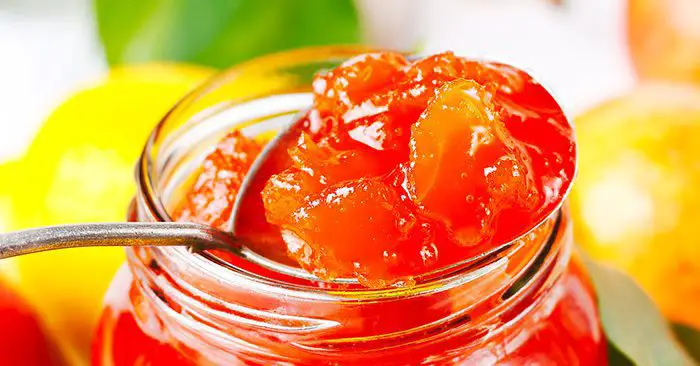
Homemade pectin is usually made from apples or crab apples, both of which have an abundance of pectin.
Making homemade pectin is one of those things you can do to save some money and to learn as a self-reliance skill.
If there was ever a time when the stores are closed or sold out, knowing how to make pectin would be a very valuable skill that could help your family and community preserve food.
Just like everything else, the homemade version of pectin is less processed and by default more healthy than the store-bought stuff.
To read more on how commercial pectin is produced click here to see what Wikipedia says about the process. Then decide which version is better.
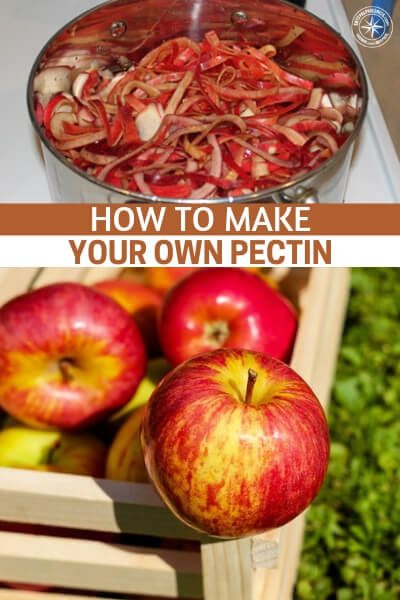
By Author SHTFPreparedness
Posted on Last updated: May 22, 2024
Categories Food & Water
How to Make Your Own Pectin - SHTFPreparednessIf you're gonna fight, fight like you're the third monkey on the ramp to Noah's Ark... and brother its starting to rain. Join our efforts to Secure America's Borders and End Illegal Immigration by Joining ALIPAC's E-Mail Alerts network (CLICK HERE)
-
07-04-2025, 03:45 AM #10192
How To Catch, Filter and Store Rainwater
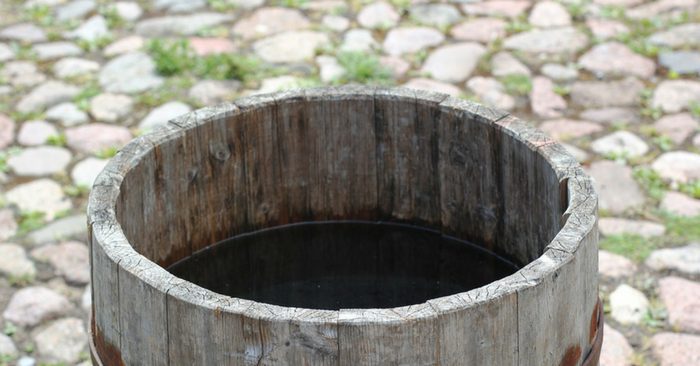
When you ask most people how to catch rainwater, they think it is as simple as having a slanted surface that drains into a gutter and then into some kind of holding tank. While this may be true in its most basic sense, there is much more that goes into catching and filtering rainwater so it will be safe to use (potable) and store for a long period of time.
An important thing to consider is whether catching rainwater is legal in your area. There are numerous counties, local municipalities, and even states that have anti-water catchment laws. Other red-tape may include HOA rules prohibiting the set up of a water catch system.
There are 4 basic steps to the whole process: catching, holding, filtering, and storing it. Don’t forget the means to pump it or access it so you can at least get buckets. Of course, you want to make your system as convenient as possible, not to mention as large as possible. Water is life and if done wrong, can kill with pathogens and bacteria that can make you sick. Even though the water is usually pure and safe when it falls from the sky (barring polluted areas, of course), the surface it lands on may have bird droppings, rotting vegetation such as leaves and other debris. Filtering is very important!
By Author LeAnn
Posted on Last updated: May 22, 2024
Categories How To
How To Catch, Filter and Store Rainwater - SHTFPreparednessIf you're gonna fight, fight like you're the third monkey on the ramp to Noah's Ark... and brother its starting to rain. Join our efforts to Secure America's Borders and End Illegal Immigration by Joining ALIPAC's E-Mail Alerts network (CLICK HERE)
-
07-04-2025, 03:48 AM #10193If you're gonna fight, fight like you're the third monkey on the ramp to Noah's Ark... and brother its starting to rain. Join our efforts to Secure America's Borders and End Illegal Immigration by Joining ALIPAC's E-Mail Alerts network (CLICK HERE)
-
07-04-2025, 04:19 AM #10194
Alternative Medicine
NaturalNews.com

12/12/2024 / By Olivia Cook
Health benefits of ancient herbal remedy marshmallow root
Marshmallow root (Althaea officinalis) has been used for healing purposes since ancient times, with its name "Althea" deriving from the Greek...
3K Views // Share

12/06/2024 / By Olivia Cook
Exploring the brain benefits of RUE
In the search for solutions to tackle neurodegenerative diseases like Alzheimer's disease, Huntington's disease and Parkinson's disease, scientists...
4.6K Views // Share

12/06/2024 / By Olivia Cook
Health benefits of sorrel leaves: An ancient remedy backed by modern science
Imagine a single herb that can boost energy, enhance digestion, help prevent cancer, strengthen bone and support immune system health. It may sound...
4K Views // Share

12/05/2024 / By Olivia Cook
Herbs and spices that support good metabolic health
Adding a bit of spice to your meals can do more than just enhance flavor — it can also benefit your health. Recent research published in the...
4.6K Views // Share

12/05/2024 / By Olivia Cook
The science behind capers: A nutritional and bioactive powerhouse
Capers are the edible flower buds of the Capparis spinosa plant – a hardy shrub native to Mediterranean regions and parts of Asia. These buds are...
15.5K Views // Share

12/05/2024 / By News Editors
Broccoli sprouts and their effect on breast cancer
Cruciferous vegetables such as broccoli, Brussels sprouts and cabbages contain many phytochemicals, vitamins and minerals. In fact, in the late 90s,...
6.8K Views // Share

12/04/2024 / By Olivia Cook
A closer look at the health benefits of capers
Capers are the unripened flower buds of the caper bush Capparis spinosa, a plant native to the Mediterranean region. Revered for their unique flavor,...
12K Views // Share
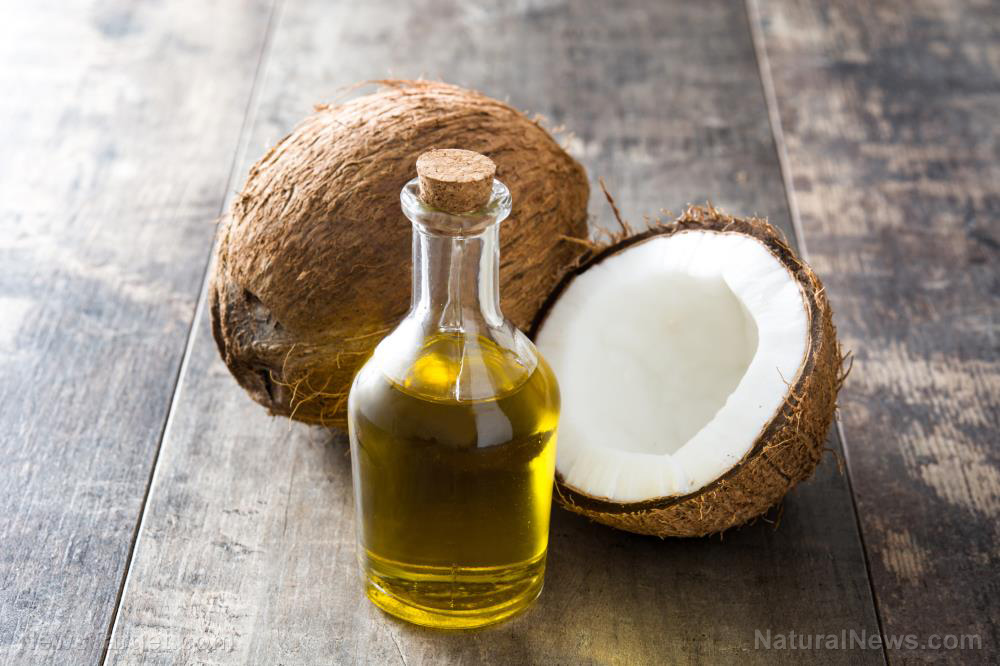
12/04/2024 / By News Editors
Coconut oil improves brain function in Alzheimer’s patients
Alzheimer's disease is a devastating degenerative brain condition that affects millions of people in the U.S. While pharmaceutical treatments have...
10K Views // Share

12/03/2024 / By Olivia Cook
Rue 101: Everything you need to know about the “herb of grace”
Rue, scientifically known as Ruta graveolens, has been revered for its potent medicinal properties, culinary applications and even spiritual...
1.9K Views // Share

12/03/2024 / By News Editors
Seasonal allergies? These 6 foods may help
When seasonal allergies flare, do you reach for antihistamine drugs that can leave you edgy and dehydrated? If you'd like to explore natural options...
3.5K Views // Share
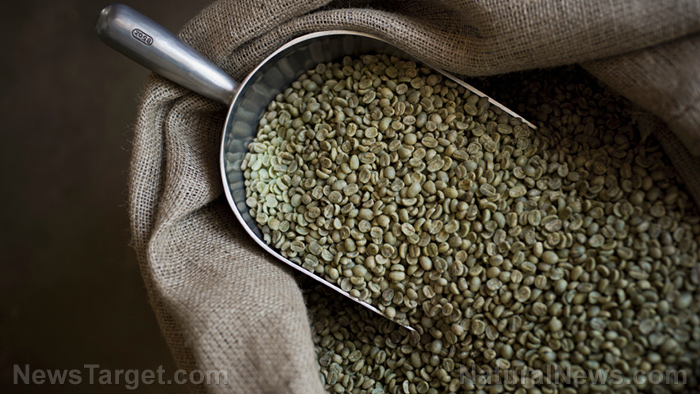
12/02/2024 / By News Editors
Green coffee health benefits: Real or imagined?
What is green coffee? Before Dr. Oz featured it on his show this year, creating a global consumer feeding frenzy, it had already been investigated...
1.4K Views // Share
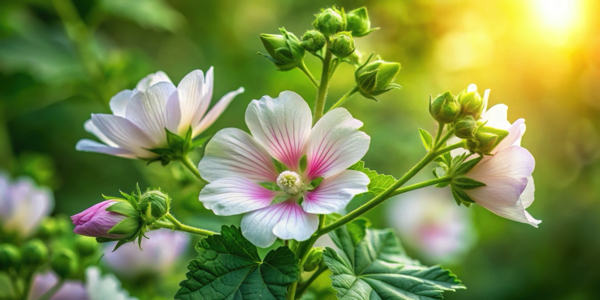
11/29/2024 / By Olivia Cook
Here’s why marshmallow plants are one of Mother Nature’s nutritional treasures
The marshmallow plant, scientifically known as Malva sylvestris L., has been used for centuries in traditional medicine and as a functional food....
4.2K Views // Share
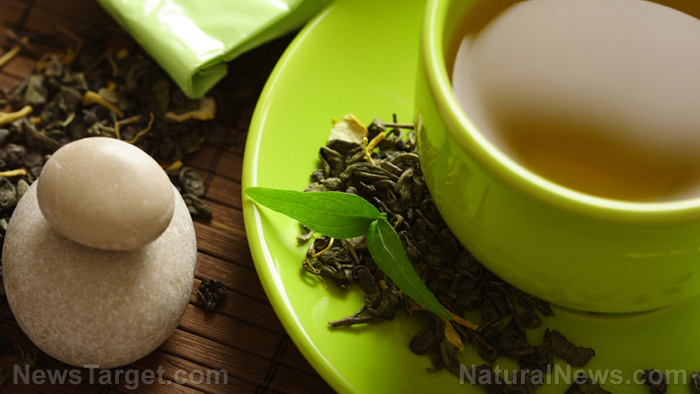
11/29/2024 / By News Editors
400 Reasons to consume green tea
Things have come full circle. Green tea, which is consumed by billions the world over as an enjoyable beverage, is once again attaining its rightful...
3.3K Views // Share

11/29/2024 / By Olivia Cook
Parable of the mustard seed: Tiny powerhouse of flavor and health
In ancient teachings, Jesus used the mustard seed as a profound analogy for faith. He highlighted how like a mustard seed, the smallest amount of...
5.5K Views // Share
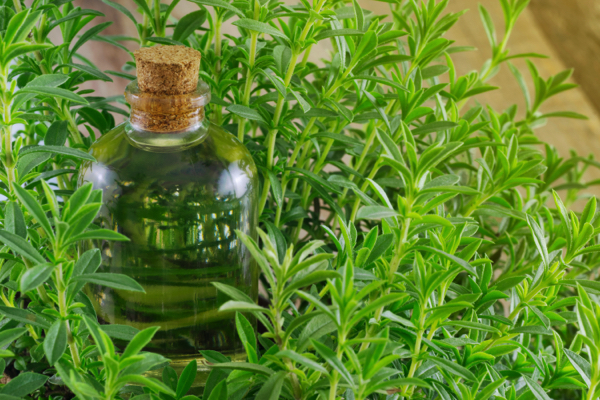
11/28/2024 / By Olivia Cook
Modern science uncovers the secrets behind ancient herb tarragon’s healing prowess
Tarragon might already have a place in your spice rack as a tangy, aromatic addition to salads, sauces and soups. But beyond its culinary uses,...
4.7K Views // Share

11/28/2024 / By News Editors
Little black seed decreases viral load in hepatitis C patients
Known mostly as a food condiment, this little black seed carries a medicinal punch so powerful it is being studied to treat some of the world's most...
3.7K Views // Share

11/27/2024 / By Olivia Cook
Six simple lifestyle changes that can help reduce your dementia risk
Over 55 million people worldwide are living with dementia -- a term for various progressive disorders affecting memory and thinking. Alzheimer's...
16.3K Views // Share
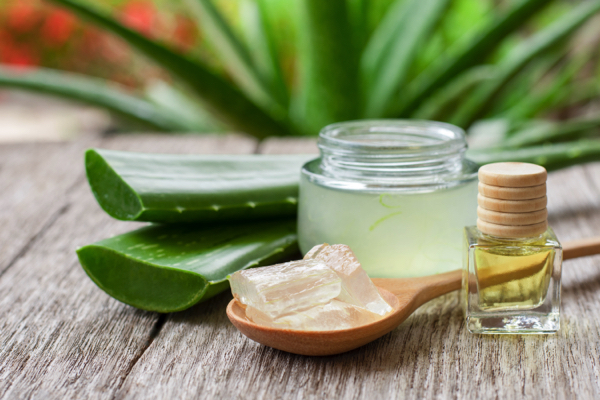
11/27/2024 / By Olivia Cook
Aloe vera: Nature’s green elixir with science-backed health benefits
Aloe vera, known as "the plant of immortality" by ancient civilizations, has gained modern scientific validation for its remarkable effects on...
3.9K Views // Share
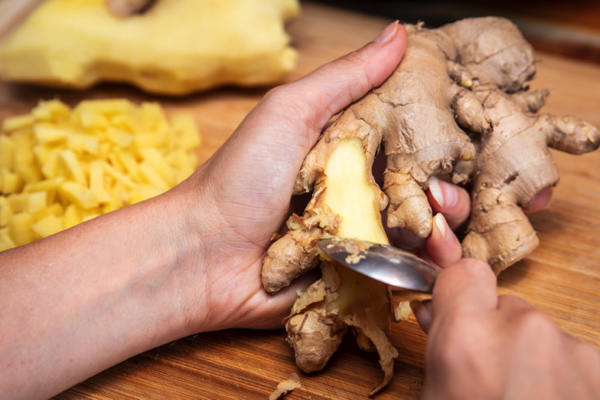
11/27/2024 / By News Editors
Ginger: The enemy of type 2 diabetes
Ginger has been studied to have value in over 150 health conditions with type 2 diabetes top on the list. With anti-diabetic drugs linked to...
3.4K Views // Share
11/26/2024 / By Kevin Hughes
Mike Adams Sermon 47: GARLIC as God’s natural medicine against infections and high cholesterol
The 47th sermon of the Health Ranger Mike Adams for the Church of Natural Abundance discussed garlic as God's natural medicine against infections and...
3.8K Views // ShareIf you're gonna fight, fight like you're the third monkey on the ramp to Noah's Ark... and brother its starting to rain. Join our efforts to Secure America's Borders and End Illegal Immigration by Joining ALIPAC's E-Mail Alerts network (CLICK HERE)
-
07-04-2025, 03:12 PM #10195
Cultivating a greener future: The timeless wisdom of Carla Emery’s “Growing Your Own Vegetables”
07/04/2025 // Kevin Hughes // 550 Views
Tags: agriculture, Carla Emery, food freedom, food supply, green living, Growing Your Own Vegetables, harvest, home gardening, homesteading, horticulturists, off grid, organic farming, organics, preparedness, prepper, prepping, survival, tips, vegetables, vertical gardening, worm bins

- Originally published in 1970, Carla Emery's "Growing Your Own Vegetables" has become a cornerstone for both novice and experienced gardeners, promoting self-sufficiency and sustainable living through organic farming practices.
- Emery views gardening as a lifestyle choice that benefits individuals and the planet. Her book emphasizes the accessibility of gardening for everyone, regardless of space constraints, and highlights the rewards of fresh produce, i.e., improved health and a deeper connection with nature.
- The guide offers detailed instructions for beginners, recommending easy-to-grow vegetables like bush beans and tomatoes, and advising on optimal sunlight (at least six hours daily) and morning watering to prevent diseases. For experienced gardeners, it suggests expanding to root crops and cool-season vegetables, considering climate-specific needs.
- Emery emphasizes the importance of soil testing and amending with organic matter like compost. She advocates for sustainable practices such as composting, worm bins and mulching. Techniques like raised beds, vertical gardening and gardening under cover are also discussed to maximize space and extend the growing season.
- The guide promotes proactive pest and disease management through crop rotation, natural pest control methods (like planting marigolds) and encouraging beneficial insects. Emery's holistic approach ensures a healthy garden ecosystem and a continuous supply of fresh produce.
In an era where self-sufficiency and sustainable living are gaining renewed interest, Carla Emery's seminal work, "Growing Your Own Vegetables: An Encyclopedia of Country Living Guide," stands as a beacon for both novice gardeners and seasoned horticulturists.
Originally published in 1970, this comprehensive guide has evolved through 10 editions. Each subsequent edition reflects Emery's enduring passion for organic farming and her commitment to empowering individuals to take control of their food sources.
Emery, a pioneer of the back-to-the-land movement, began her journey on a small farm in Idaho. Her book originated as a series of handwritten chapters, distributed to those who responded to an advertisement in Organic Gardening magazine. Over the decades, it has grown into a definitive encyclopedia, revered for its practical advice and timeless wisdom.
Emery's writing is a testament to her dedication to environmental stewardship and her belief in the transformative power of gardening. Her philosophy is simple yet profound. Gardening is more than a hobby; it is a lifestyle choice that benefits both the individual and the planet.
Her guide emphasizes the accessibility of gardening, whether one has a sprawling rural plot, a modest suburban yard, or a small urban balcony. The rewards, she argues, are manifold: Fresh, organic produce; improved physical health; and a deeper connection with nature.
The journey to a bountiful garden begins with careful planning. Emery advises selecting a location that receives at least six hours of sunlight daily, as most vegetables thrive in sunny conditions. Additionally, a reliable water source is crucial, with morning watering being optimal to prevent diseases like mildew.
For beginners, Emery recommends starting with easy-to-grow vegetables such as bush beans, leaf lettuce, onions, summer squash, Swiss chard and tomatoes. These crops provide a continuous harvest and build confidence in new gardeners.
Experienced gardeners can expand their repertoire by incorporating root crops, longer-season vegetables and novelties like Brussels sprouts, cabbage, carrots, corn, cucumbers, kale, peppers and potatoes. Emery stresses the importance of considering one's climate. Warm-season crops like tomatoes and peppers require heat, while cool-season crops like lettuce and spinach prefer cooler temperatures.
Emery's guide delves into the critical role of soil health, advocating for soil testing to understand its composition and pH. Most vegetables thrive in slightly acidic to neutral soil. To enhance soil quality, Emery suggests amending it with organic matter such as compost and manure, which enrich the soil and provide essential nutrients.
Composting, she notes, is a sustainable practice that transforms kitchen scraps and garden waste into "black gold," enriching the soil and reducing waste. The guide also explores innovative techniques like worm bins, which utilize red wigglers to convert kitchen scraps into nutrient-rich castings.
Mulching is another recommended practice, conserving moisture, suppressing weeds and adding organic matter to the soil. For those in cooler climates, Emery advocates for gardening under cover, using cold frames, greenhouses and cloches to extend the growing season and protect plants from adverse weather conditions.
Emery emphasizes the importance of strategic planting, suggesting raised beds and wide rows to maximize space and efficiency. Vertical gardening is another space-saving technique, allowing gardeners to train vines on supports and free up ground space for other plants. Regular harvesting is crucial, as it encourages plants to produce more and ensures a continuous supply of fresh produce.
Pest and disease management is a key component of Emery's guide. She advocates for proactive measures such as crop rotation and natural pest control methods, including planting marigolds and alliums to repel insects. Encouraging beneficial insects like ladybugs and praying mantises can also help maintain a healthy garden ecosystem.
Emery's "Growing Your Own Vegetables" is more than just a gardening manual; it is a manifesto for sustainable living. Her book empowers individuals to embrace self-sufficiency, make healthier food choices and contribute to a more sustainable future.
Whether you are a seasoned gardener or a curious beginner, Emery's guide offers invaluable insights and inspiration to cultivate your own piece of paradise.
Watch this video about Carla Emery's book, "Growing Your Own Vegetables: An Encyclopedia of Country Living Guide."
This video is from the BrightLearn channel on Brighteon.com.
Sources include:
Brighteon.ai
Brighteon.com
Cultivating a greener future: The timeless wisdom of Carla Emery’s “Growing Your Own Vegetables” – NaturalNews.com
If you're gonna fight, fight like you're the third monkey on the ramp to Noah's Ark... and brother its starting to rain. Join our efforts to Secure America's Borders and End Illegal Immigration by Joining ALIPAC's E-Mail Alerts network (CLICK HERE)
-
07-04-2025, 03:16 PM #10196
Ten wild edibles in North America that could save you in a survival situation
07/04/2025 // Lance D Johnson // 820 Views
Tags: acorns, cattails, Dandelion, food freedom, food security, food supply, foraging, homesteading, medicinal plants, natural medicine, poison prevention, preparedness, prepping, red clover, saw palmetto, self-reliance, Stinging Nettle, survival food, sustainable living, tips, toxic plants, traditional knowledge, wild edibles, wilderness survival

In a world where corporate agriculture mass-produces nutritionally depleted food and Big Pharma pushes synthetic remedies, nature’s wild edibles stand as a defiant testament to real sustenance and medicine. Across North America’s forests, fields, and wetlands grows an unregulated apothecary — plants densely packed with vitamins, minerals, and healing compounds. But this bounty comes with a caveat: for every life-sustaining wild green or berry, there exists a nearly identical twin capable of inducing organ failure.Survival isn’t just about stockpiling beans and bullets — it’s about recognizing the land’s hidden abundance while avoiding its lethal decoys. This is primal knowledge, the kind that sustained indigenous cultures for millennia and can keep modern foragers alive when supply chains crumble.
Key points:
- Wild edibles from dandelions to cattails provide emergency calories, critical nutrients, and natural medicine.
- Deadly lookalikes like death camas (vs. wild garlic) and horse nettle (vs. stinging nettle) demand 100% identification certainty.
- Foraging ethics protect ecosystems: Never over harvest, avoid polluted areas and respect private property.
- Processing methods matter: leaching acorns and neutralizing nettle stings make these otherwise toxic plants edible.
- Saw palmetto berries (immune support) and red clover (blood purifier) offer medicinal options.
Wild food as survival insurance
The dandelion (Taraxacum officinale), dismissed as a lawn weed, carries more vitamin A than carrots and enough potassium to rival bananas. Its root, when roasted, becomes a caffeine-free coffee substitute rich in prebiotic inulin — a gut health essential when processed foods vanish. But complacency kills: false hawksbeard and catsear mimic dandelion leaves, though their branched flower stems and lack of milky sap betray them.
Stinging nettle (Urtica dioica) delivers a painless payload once cooked, offering more protein than most cultivated greens (up to 25% by dry weight) and enough iron to rival red meat. Its toxic doppelgänger, horse nettle, bears tomato-like yellow fruit and lacks stinging hairs — ingesting it causes paralysis.
California’s indigenous tribes relied on saw palmetto berries (Serenoa repens) for urinary health centuries before companies synthesized its compounds into prostate drugs. The ripe purple berries, with a taste reminiscent of overripe pineapple, modulate hormones and reduce inflammation.
Meanwhile, red clover (Trifolium pratense) blossoms — high in blood-cleansing coumarins — were Civil War-era field dressings for wounds.
The onion’s wild cousins (Allium spp.) can be foraged safely with one rule: if it doesn’t smell like garlic when crushed, spit it out. Death camas (Toxicoscordion venenosum) shares the same grassy leaves and bulb structure but contains alkaloids that shut down the nervous system within hours.
Similarly, novice foragers often mistake water hemlock (Cicuta spp.) — North America’s deadliest plant — for wild parsnip or celery. A single bite of its root induces violent seizures. Pioneers dubbed it "the suicide root" after witnessing settlers collapse mid-meal. Its telltale markers: purple-streaked stems and a rancid, mouse-like odor.
Pine trees (Pinus spp.) offer more than lumber — their needles brew into tea with five times the vitamin C of oranges, a scurvy preventative used by Jacques Cartier’s crew in 1536. Contrast this with yew trees, whose ruby-red "berries" (actually toxic arils) can stop a human heart in minutes.
Cattails (Typha latifolia) behave as wetland supermarkets: Spring shoots taste like cucumber, summer pollen packs 30% protein, and starchy rhizomes yield survival flour. Meanwhile, toxic yellow flag iris masquerades as young cattails but lacks the telltale brown seedhead.
One of history’s bitterest ironies? White snakeroot (Ageratina altissima), the plant that killed Abraham Lincoln’s mother via "milk sickness," grows alongside edible wild bergamot. The former contains tremetol, a toxin that taints dairy, while the latter makes an oregano-flavored tea that fights infections.
Obtain a wild edible plant guide book and start foraging
Having a wild edible plant guide book is essential for safe and sustainable foraging, as it helps identify nutritious species while avoiding potentially dangerous look-alikes. Guides like Peterson’s Field Guide to Edible Wild Plants or Sunshine Brewer's Coast to Coast Survival Plants offer detailed descriptions, clear images, and harvesting techniques, making them invaluable for beginners and experienced foragers alike. Beyond just relying on books, practicing foraging firsthand develops critical observation skills and deepens your understanding of seasonal and regional plant variations. Engaging with local experts, such as county extension offices, further enhances knowledge through hands-on training. Wild edibles not only diversify diets with nutrient-rich greens but also foster a deeper connection to nature, highlighting the importance of combining reliable resources with real-world experience. Mastering foraging takes time, but the rewards — greater self-sufficiency, improved diet, and ecological awareness — are well worth the effort.
Sources include:
Prepperswill.com
Naturalpedia.com
Naturalpedia.com
Ten wild edibles in North America that could save you in a survival situation – NaturalNews.comIf you're gonna fight, fight like you're the third monkey on the ramp to Noah's Ark... and brother its starting to rain. Join our efforts to Secure America's Borders and End Illegal Immigration by Joining ALIPAC's E-Mail Alerts network (CLICK HERE)
-
07-04-2025, 04:00 PM #10197If you're gonna fight, fight like you're the third monkey on the ramp to Noah's Ark... and brother its starting to rain. Join our efforts to Secure America's Borders and End Illegal Immigration by Joining ALIPAC's E-Mail Alerts network (CLICK HERE)
-
07-04-2025, 04:02 PM #10198If you're gonna fight, fight like you're the third monkey on the ramp to Noah's Ark... and brother its starting to rain. Join our efforts to Secure America's Borders and End Illegal Immigration by Joining ALIPAC's E-Mail Alerts network (CLICK HERE)
-
07-04-2025, 04:03 PM #10199If you're gonna fight, fight like you're the third monkey on the ramp to Noah's Ark... and brother its starting to rain. Join our efforts to Secure America's Borders and End Illegal Immigration by Joining ALIPAC's E-Mail Alerts network (CLICK HERE)
-
07-04-2025, 04:07 PM #10200If you're gonna fight, fight like you're the third monkey on the ramp to Noah's Ark... and brother its starting to rain. Join our efforts to Secure America's Borders and End Illegal Immigration by Joining ALIPAC's E-Mail Alerts network (CLICK HERE)


 226Likes
226Likes LinkBack URL
LinkBack URL About LinkBacks
About LinkBacks




 Reply With Quote
Reply With Quote
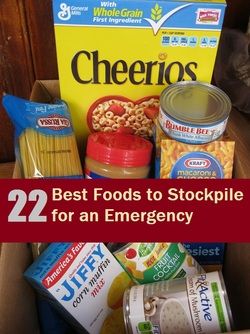
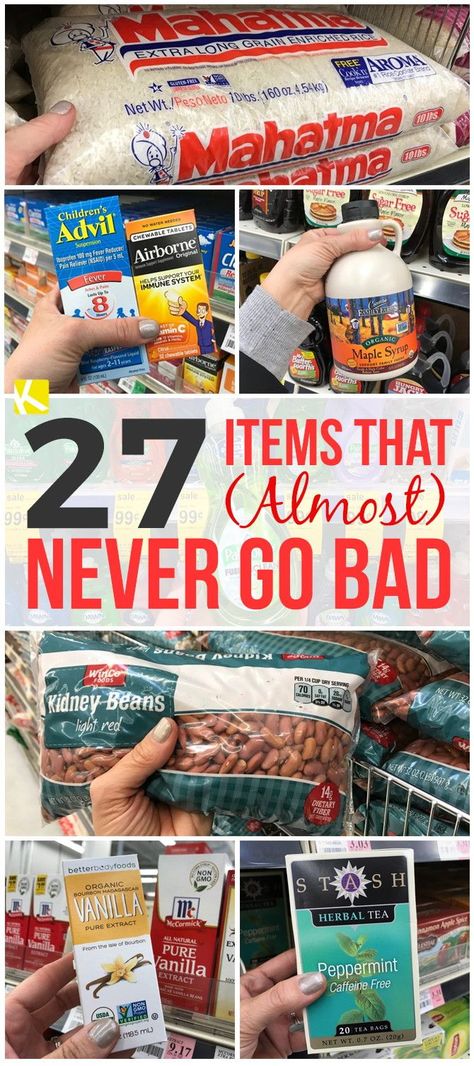





New York Post 270.4K Followers Supreme Court allows Trump admin...
10-03-2025, 09:46 PM in General Discussion